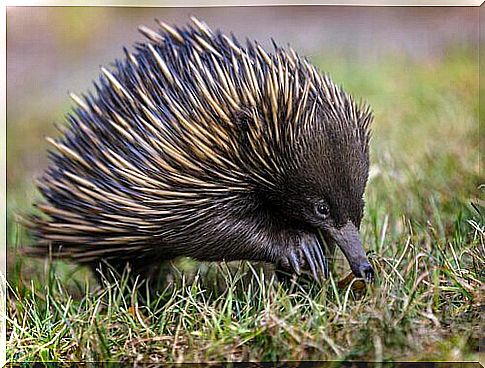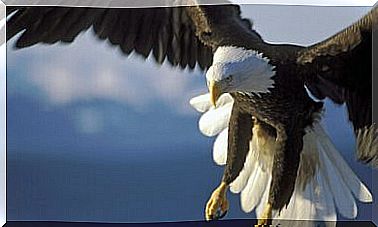Mammals That Lay Eggs

Like a poem we recite from memory, everyone knows that mammals are those animals whose embryos develop inside the womb. However, monotremes are the exception to the rule. There are mammals that lay eggs !
Are there any mammals that lay eggs?
It may sound a little strange, but there are a lot of curious things in nature. Pregnancies are one of the many things that catch our attention, as on many occasions they are completely different from what we know.
Mammals that lay eggs or, as they are scientifically defined, monotremes, share characteristics with the class mammalia , but also with reptiles . They are oviparous and have a ‘cloaca’ or orifice into which the urinary, digestive and reproductive systems converge.
What other characteristics belong to this species? With mammalia they share the hair that covers their skin, the production of milk to feed the young, the three bones of the middle ear, the diaphragm, the heart divided into four cavities and a body temperature that oscillates between 28 and 32 ° C.

Furthermore, these species have some ‘defects’ – so to speak – which do not allow them to be 100% mammals. In addition to being oviparous, their teeth are atrophied or absent, they do not have a lacrimal canal, the muzzle ends in a beak, the face is covered with an elastic skin and the males have a spur in the hind legs.
Mammals that lay eggs: the echidni
It is a family of four species very similar to hedgehogs – like the one in the photo that opens the article – and which live in Oceania, specifically in Australia, Tasmania, New Guinea and Salawati. They owe their name to the mythological nymph of ancient Greece, who was covered with thorns.
Echidni have a compact body, about 45 centimeters long with a tail that measures 10, and can weigh seven pounds. Males are larger than females. Their diet is based on worms and insects, therefore they have a tubular oral apparatus and a long and sticky tongue – similar to that of giant anteaters – which can measure up to 20 centimeters.
The reproduction of the echidni is very curious: after mating, the female lays only one egg and hatches it for about 10 days. After this period, the baby sucks the milk from the pores, as the mother has no nipples. Later it remains in a pouch – like that of kangaroos – for almost two months, during which time the thorns that will serve as protection develop.
Mammals that lay eggs: the platypus
This semi-aquatic animal is one of the strangest on the face of the earth, as it looks like a ‘combination’ of various species: duck bill, beaver tail and nutria legs. It is also poisonous, lays eggs and lives only in eastern Australia.

To reproduce, the pair of platypuses carry out a sort of courtship in the water and, after mating, the female goes to a den near the shore (about 20 centimeters deep) where she will devote herself to developing the eggs in the uterus for about a month.
After this period, the female will lay her eggs in a nest of moist leaves and hatch them for 10 days. As soon as they are born, the young are very vulnerable, have no hair and are blind. For this reason they are completely dependent on the mother. She feeds them with milk, although she does not have nipples: the puppies will lick her from her abdomen.








